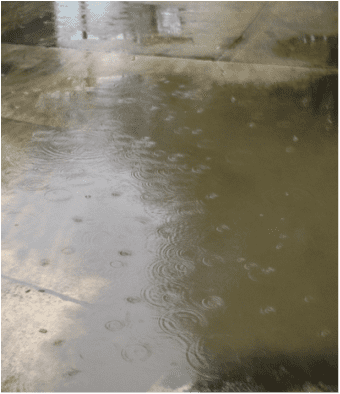Biking Home in the Rain
- John Zappa
- Jul 15, 2023
- 4 min read
Updated: May 24, 2024

It's time to head home from work and I look out the window to see a rain storm moving into the area. Since I commute by bike, I have three choices: ride home - mostly likely in the rain, take the bus and put the bike on the front of the bus, or leave the bike at the office and take a train. I opt for the first and head out the door hoping to beat the worst of the storm..
This is is not the first time I've taken a chance with the rain, nor will it be the last. And through the years, I've tweaked my bike commuting setup to deal with the weather. So the hopeful part of me is thinking, it may not rain too hard so how wet can I get?
As I get on the street, I can see that the pavement is already quite wet and there is a slow but steady rain. The ride is nine miles and normally takes 40 minutes, but today I know it will be slower.
One of the reasons I was so confident er.. hopeful, about not getting wet is that I have fenders on my commuting bike. Before I added fenders, it meant that once the road was wet, I was wet. Most of us have seen the hapless rider with a stripe down their back. It's not from the actual rain, but rather the water splashing up from the pavement by the rear wheel. Fenders keep the water from splashing on you.
Similar to a car, stopping distances are longer on a bike when the pavement is wet. Unlike a car, once bicycle brakes become wet, their effectiveness is reduced. Additionally, when it first starts raining, the oil residue on most pavement actually makes the road slicker as well. I'm aware of these issues and my best defense is to ride more slowly. I also think about the advice from the Zen Master of Biking in Chicago, who cautions against riding through puddles since you never know if a pothole is lurking below.
At the start of the ride I turned on my bike lights. I actually have two front lights (one blinking, and one steady) and two rear lights to maximize visibility on days like today. As a bike commuter, I always feel vulnerable riding on the streets, even more so in the rain. One important way to address this concern is to help drivers see me.
As I head out to the lakefront for the majority of the ride, the rain begins to start falling more steadily. I pass bikers, runners and other individuals out in the rain.
The tires on my commuting bike are wide: 700x35 mm to be precise, which provides significantly more traction than the tires on most road bikes. For comparison, road bike tires are narrow; 700x 25 mm. The advantage of these more narrow tires are less weight and rolling resistance and thus a faster ride. However, there is also less surface area touching the pavement which means it's easier to skid and harder to control the bike. After years of using a standard road bike setup and falling in bad weather, I switched to a bike frame that accommodates wider "commuting" tires.
There is however too much of a good thing. Mountain bike tires are wider than my commuting tires: 28"x 2.1". Yes, that's correct. Road bikes tires are measured in metric units and mountain bike tires in English units - go figure! While mountain bike tires provide a more stable ride, I find the weight and rolling resistance terrible for biking to work.
There is a lot to the arcane and intricate world of bike tires but having the right size does matter
I'm about 1/2 way home and so far mostly dry. But that is about to change. The rain starts to fall harder and soon it turns into a deluge. At this point, no amount of protection is going to keep me dry. I am thankful however that I have a pair of clear glasses to protect my face. They are cheap safety glasses and work great. By the time I get home, I am thoroughly wet. However, my stuff is dry thanks to the waterproof saddlebags I use.
After drying off myself, I take a few minutes to dry out my shoes. I find old newspapers make a great stuffing for absorbing the moisture. Of course I may be the last person in America still getting a newspaper. Lastly, I make sure the bike chain is lubricated to avoid rust.


So, I got wet today which was not fun, but I still enjoyed the ride and it was certainly memorable. Here's my advice from bike commuting in the rain:
Five Tips for Bike Commuting in the Rain
Put fenders on your bike - never get sprayed again from wet pavement.
Use a waterproof bag - keep your stuff dry even if you get wet.
Allow more time to stop - it takes longer in the rain and is much easier to skid.
Make sure you bike has lights - visibility is important; the more lights the better.
Take care of your equipment - when the ride is over make sure your clothing and bike get proper treatment.





















Comentarios